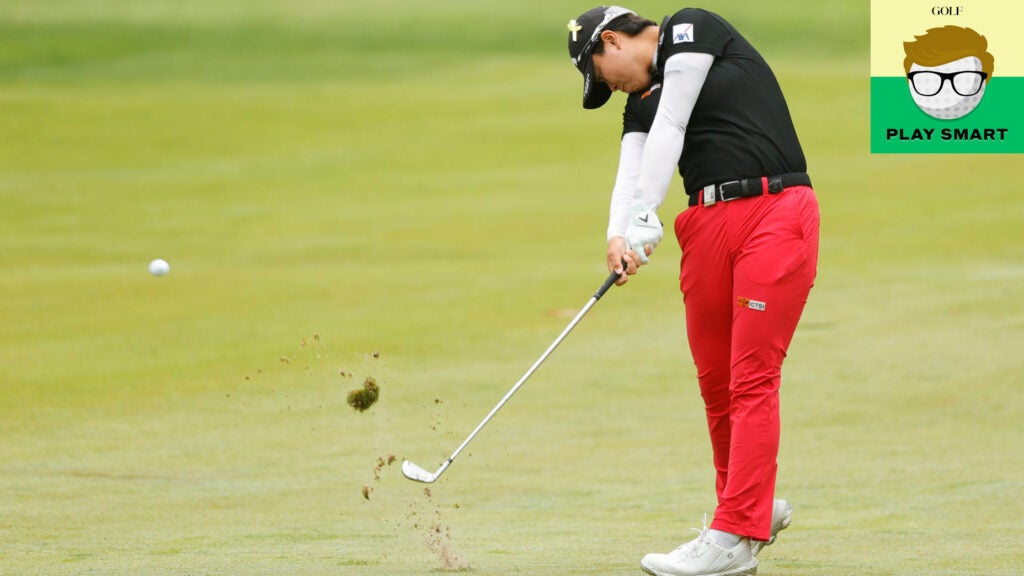Welcome to Play Smart, a game-improvement column that drops every Monday, Wednesday and Friday from Game Improvement Editor Luke Kerr-Dineen (who you can follow on Twitter right here).
Yuka Saso is coming into Pine Needles looking to become the first golfer since Karrie Webb to defend her U.S. Women’s Open title.
Last year en-route to victory, the wider world of golf fans and coaches fell in love with Saso’s golf swing. But Yuka knows that if she wants to lift the trophy again, it won’t just predicate on her success with full shots. It’ll require precision with her wedges, too — an area of her game she says she’s struggled with.
But it’s getting better thanks in large part to a training aid called the deWiz.
Whenever I hear of a group of pro golfers, unsolicited, start training with a new product my ears always perk up, and that’s exactly what’s happening with the deWiz. The product is designed to work like a wristwatch, and players like Bryson DeChambeau, Henrik Stenson and Vijay Singh, among others, use it to measure a variety of different metrics about their backswing: From speed, to backswing length.
Add Saso to the list. We had a quick chat last week, ahead of the U.S. Women’s Open, to learn about how she’s working on her game from tee-to-green ahead of this year’s contest.
This Q and A has been lightly edited for clarity and brevity.
Luke Kerr-Dineen: So Yuka, what does a typical wedge practice session look like for you?
Yuka Saso: It takes about three hours during non tournament weeks. I hit slow though. I do my routine, make sure I get the line of where I’m aiming on every shot. I’m not just hitting balls.
I start with my 60-degree wedge, and start hitting 30-yard shots, then 60-yard shots, then 80-yard shots. The distances are different with my other wedges and short irons, but the routine is the same. I’ll start with quarter shots, then half shots, then full shots.
LKD: And how do you go about dialing in those distances?
YS: A lot of the time I’m working on my length of backswing. The more consistent I am with the length of my backswing, the more consistent I am with my timing.
I used to do the normal clock system. Very old school kind of practice. 9 o’clock, 10 o’clock, things like that. I’d have my coach or caddy tell me how close I was, but it was never perfect.
This is something the deWiz really helped me with. Now I can be much more detail-oriented. I know I want my backswing to be 130 cm for my full shots, and if I get to 135 cm, I can tell immediately.
It makes it so much easier to adjust now. If I can get my backswing length consistent when I want it to be, I know that when I go to a different course where the ball may go 10 yards further or shorter, it’s easier to get familiar with my new distances.
LKD: As for your swing itself, is there anything you work on to keep it consistent?
YS: I tend to come a little out with my hands and club on my wedges and hit pulls. With my driver I do the opposite. My hands get too deep, and my club gets too shallow. When that happens I can hit blocks.
With both of those things, especially with driver, I usually look at my transition. With longer clubs, the longer backswing you have, the longer you’ll hit your club. But with a long backswing, you need to be consistent with your transition. I know if my hands can track the same way down where they went back, I’ll be more consistent.
LKD: Golf fans, and our readers, love your golf swing. Any advice for them, or perhaps to junior golfers who may want to emulate you?
YS: I grew up playing with the guys, so I grew up trying to hit the ball long. I would say to golfers: use your lower body more. When you look at my golf swing, I’m very very lower body centric. I turn a lot. Let the hands release naturally, but don’t try to hit the ball with your hands. Move and rotate your lower body for power.
